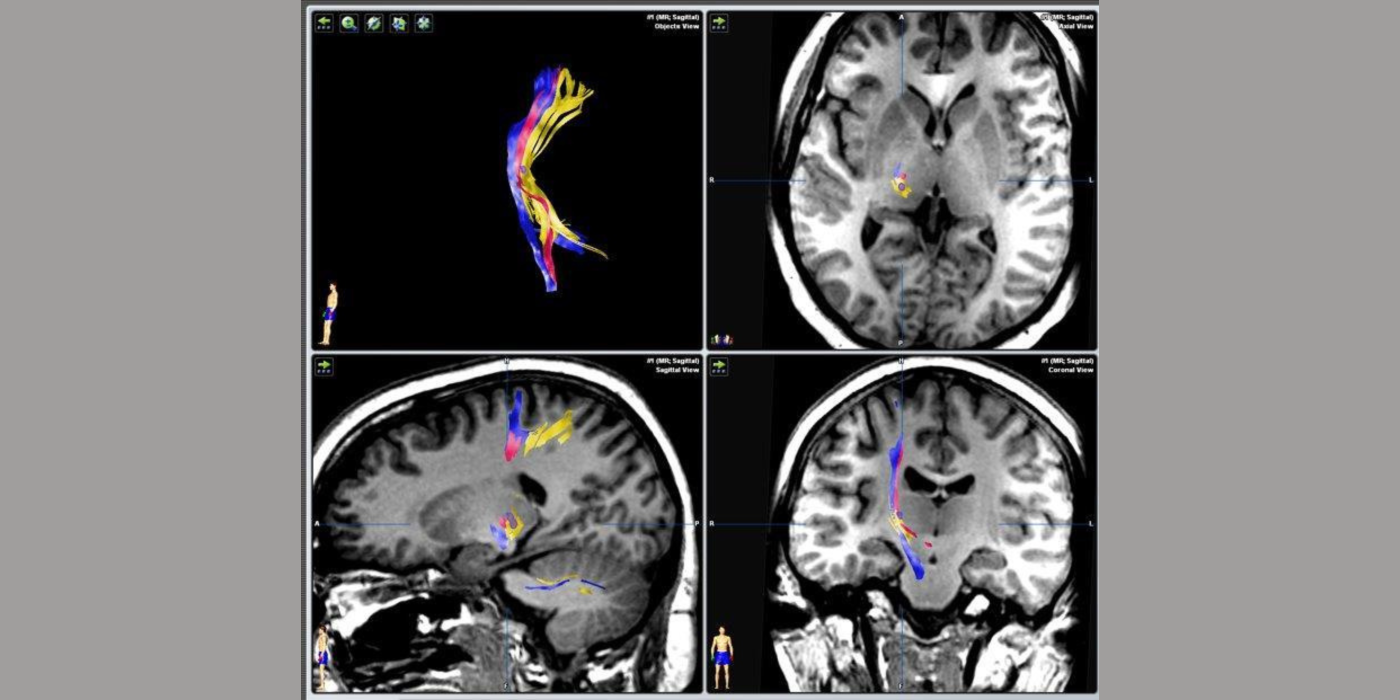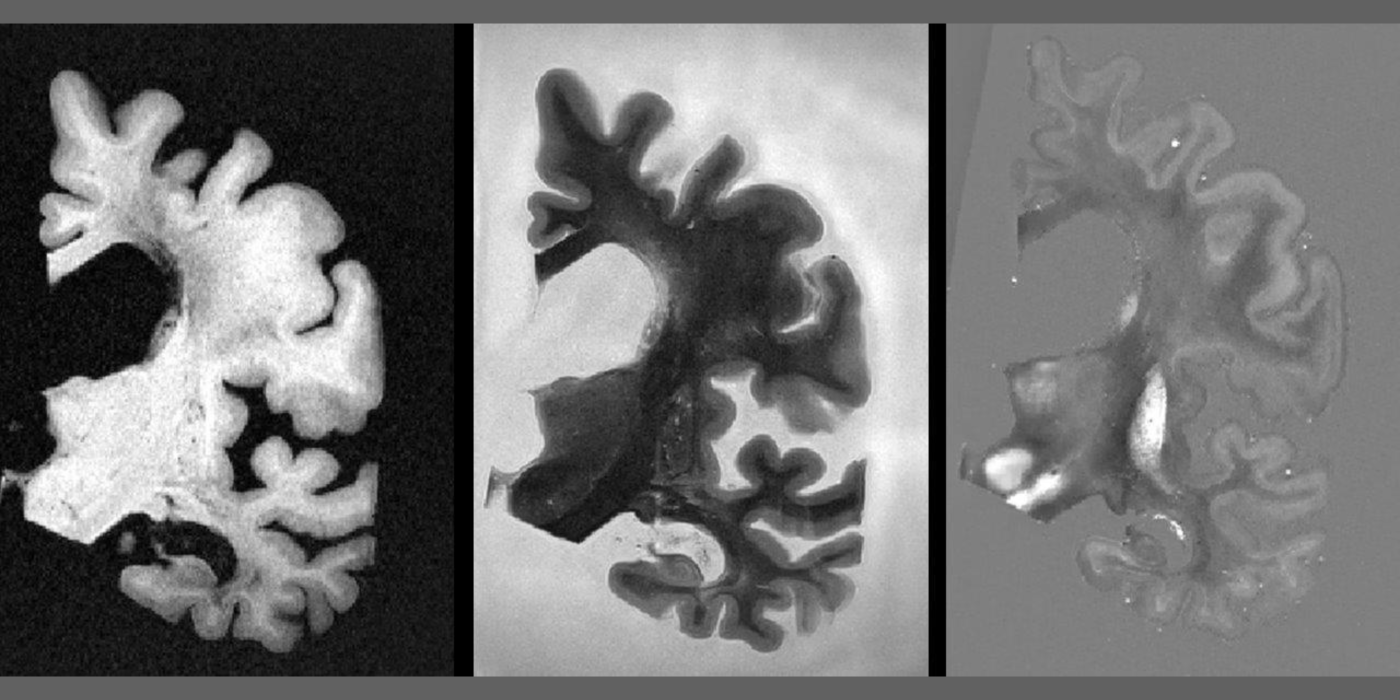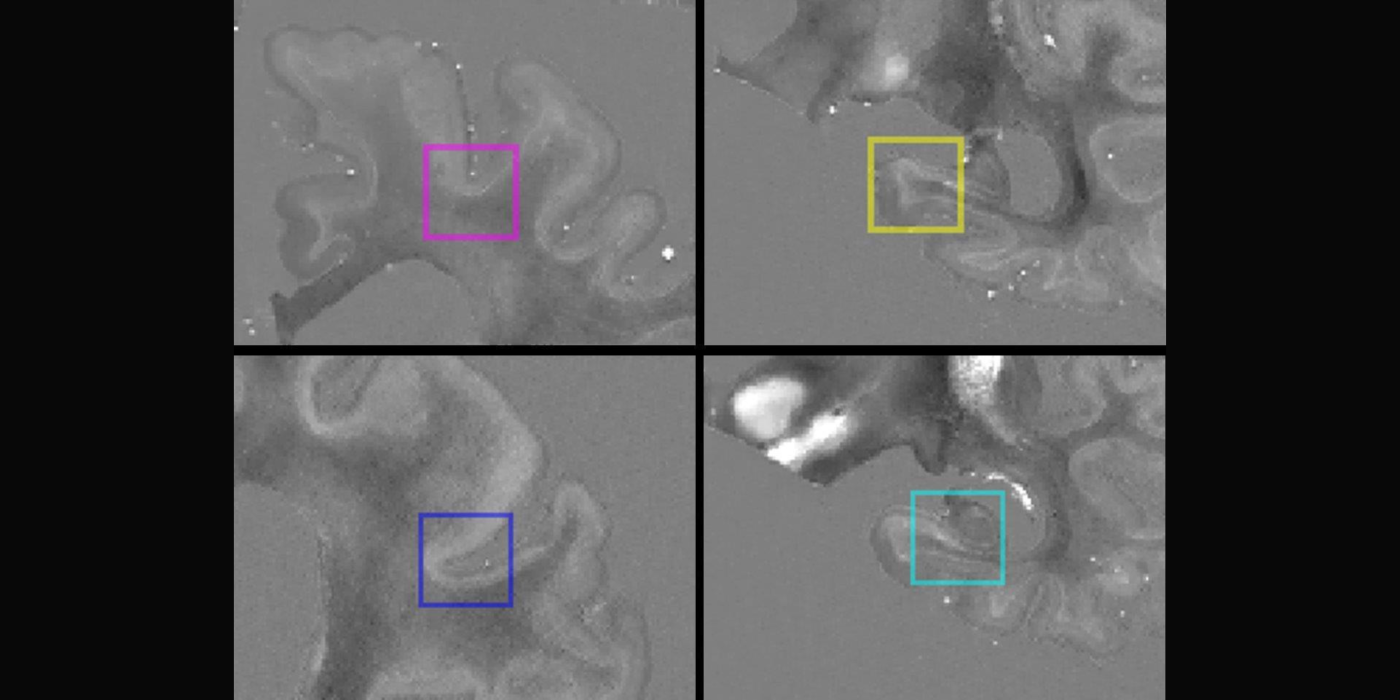
Diffusion tensor imaging (DTI) fiber tractography identifying the thalamic ventralposterolateral (VPL) nucleus
DTI fiber tractography: thalamocortical sensory fiber tracts (yellow); dentato-rubro-thalamic-cortical tracts (red); cortico-thalamic motor fiber tracts (blue). The deep brain stimulation electrode distal tip (purple) is in the right thalamus VPL nucleus.

QSM as a non-invasive imaging biomarker predicting AD neurodegeneration
Alzheimer's disease (AD), ex vivo brain magnetic resonance imaging (MRI); T1, T2 and quantitative susceptibility mapping (QSM) images

QSM as a non-invasive imaging biomarker predicting AD neurodegeneration
Quantitative susceptibility mapping (QSM) images show different regions of interest (ROIs) in the ex-vivo brain specimen of an Alzheimer’s disease (AD) patient.


